2017 Environmental Merit Award Recipients
- Welcome
- Ira Leighton "In Service to States"
- Lifetime Achievement
- Individual
- Government
- Business
- Environmental, Community, Academia & Nonprofit
- Children's Environmental Health
- Special Thanks
Welcome to the 2017 Environmental Merit Awards Ceremony
Congratulations to all of EPA New England's 2017 Environmental Merit Award Winners! Each year I, along with all of the public servants in EPA Region 1, look forward to honoring you—New Englanders who have achieved on-the-ground environmental successes across sectors. Protecting human health and the environment is EPA's mission, and we couldn't be as successful as we are without your continued passion, commitment, and stewardship.
This year we are awarding community leaders, scientists, government officials, business leaders, schools, students, and many more. These awards represent a variety of professional sectors, states and communities. Today's takeaway message is that here in New England we have a lot of environmental progress to celebrate.
Today's ceremony brings together a community of environmental stewards from every corner of New England. This is a community you should feel proud to be part of. Your work is truly making a difference in your communities and across New England to improve our environmental health.
On behalf of my colleagues at EPA New England and myself, thank you for all of the work you do, and keep up the good work.
Congratulations to all of today's winners.
Sincerely,
Deb Szaro
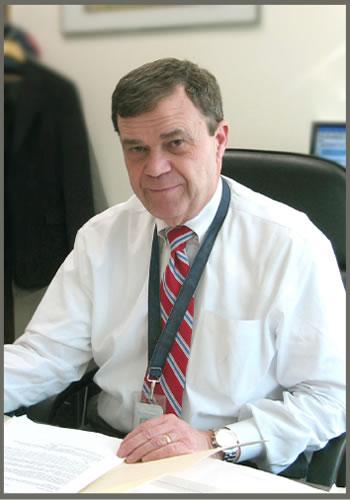 Ira W. Leighton, Jr.
Ira W. Leighton, Jr.
1945-2013
Dedicated EPA public servant since 1972
"Over more than four decades of service, Ira's leadership brought innovative solutions to America's conservation challenge and he will be remembered for this commitment to making our environment safer and healthier."
- President Barack Obama
A true friend, a mentor and a lover of New England.
He will be missed.
Ira Leighton "In Service to States" Annual Award
The New England Interstate Water Pollution Control Commission (NEIWPCC), the Northeast States for Coordinated Air Use Management (NESCAUM), the Northeast Waste Management Officials' Association (NEWMOA), in coordination with the New England state Environmental Commissioners and the United States Environmental Protection Agency, Region 1 (EPA) have initiated the Ira Leighton "In Service to States" Environmental Merit Award as a tribute to our long-time colleague and friend, Ira Leighton, who passed away in 2013, after serving forty-one years at the US EPA. Ira's dedication and passion for protecting the environment was evident to all who knew him. He was a constant presence in New England; a force who took ideas and made them actionable tasks that resulted in measurable improvements.
Saluting the Ira Leighton "In Service to States" Annual Award Recipient
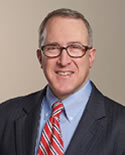
Thomas Burack
New Hampshire Department of Environmental Services
Thomas Burack, who recently finished 10 years of distinguished service as commissioner of the New Hampshire Department of Environmental Services, has had an outsized impact in the state, the region, and nationally. Considered a man of unequalled integrity and superb listening skills, he has a passion for not just improving, but revolutionizing how government works to achieve environmental protection. He was the first state co-chair of E-Enterprise for the Environment, a joint, collaborative effort of the states and EPA to modernize delivery of environmental protection and he continues to work on this as a "labor of love." Tom was a founding member of the Regional Greenhouse Gas Initiative, an effort of nine northeastern states and the nation's first mandatory, market-based program to reduce greenhouse gas emissions. He served on the Ozone Transport Commission, which secured voluntary emissions reductions from upwind power plants. At the state level, he was chair of the Governor's Climate Change Policy Task Force, which developed the NH Climate Change Action Plan. He also chaired the State Energy and Climate Collaborative and was on the NH Water Sustainability Commission and the steering committee for NH Lives on Water, an effort to develop a stakeholder group to promote stewardship of water resources. Before joining DES, Tom was chair and board member of the NH Land and Community Heritage Investment Program and the Audubon Society of NH.
Tom has been a leader in promoting the use of Lean, a method of getting greater efficiencies in government work, as well as other improvement strategies. He was instrumental in bringing the New England states together to share innovations and successes. Tom's work is marked by many achievements that have significantly improved air and water quality and cleaned up contaminated sites. Under his leadership, DES concluded historic MTBE litigation that provided the resources to address the impacts of MTBE contamination and created a trust fund to protect drinking water sources and improve drinking water infrastructure. As one of Tom's admirers observed, he puts "problem-solving above personal accomplishment, consensus above contention, and engagement above antagonism." These traits, and his passion and commitment to improving how government solves environmental challenges, make Tom worthy of the Ira Leighton Award.
Lifetime Achievement
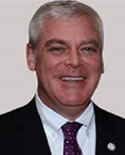
Mayor Scott Avedisian
Warwick, Rhode Island
Throughout nearly three decades in public service, Mayor Scott Avedisian has used his position to advocate for programs and policies to protect and restore our natural resources. During Mayor Avedisian's tenure, Warwick has preserved more than 200 acres for open space and passive recreation, including Rocky Point park, and land in Passeonkquis Cove and Conimicut Marsh. He has remained steadfast in his belief that, with 39 miles of coastline in Warwick alone, there is a particular responsibility to be stewards of the community's waterbodies. More than a decade ago, the city was the first municipality to partner with two sea captains on an effort to remove large debris that has been littering shoreline areas around the bay for decades. Now known as CleanBays.org, the group has removed more than 1,200 tons of debris.
Mayor Avedisian also supported a partnership among the city, academia and non-profit groups to get green infrastructures in place in coastal areas. The city works to reduce stormwater pollution and is closing some unimproved roadways along the shoreline to allow the coastline to reclaim its natural form. The mayor has supported the Warwick Sewer Authority's efforts to expand service, as well as improvements at the treatment plant to reduce the amount of phosphorus discharged into the Pawtuxet River. Several years ago, a group of Westerly students approached the mayor about expanding their innovative cooking oil project into Warwick. He immediately embraced the program, and the City now has several collection sites for used cooking oil, which is recycled and converted to biodiesel fuel credits for needy families, keeping fats, oils and grease from our waste stream. The mayor is also supporting Southern Sky's proposal to construct two solar parks in Warwick. From Earth Day activities, to embracing new ideas and programs, to visiting schools and advocating for legislation, Mayor Avedisian has been a champion of environmental causes.
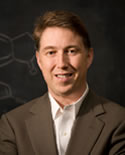
Paul Anastas
Yale University
Paul Anastas has dedicated his professional life to pursuing a healthier, more sustainable world through green chemistry—a field he conjured, founded, and catapulted forward in just two decades. His principles and scientific advances have changed the way we practice chemistry and grasp its potential. At Yale University, where Paul teaches, he inspires a generation of scientists and engineers. He has redirected the chemistry conversation away from cleaning up problems toward designing problems out of the picture. In addition to the health and environmental benefits, green chemistry has been an economic boon. Paul's work has contributed to new products, processes, patents and start-up businesses. Because of Paul, new drugs, safer technologies and products are entering markets. Academic programs in dozens of countries, research networks worldwide, scientific journals, thousands of published papers, and numerous small businesses, courses and books are devoted to the topic.
In 1989, Paul began as a chemist in EPA's chemical regulatory program, where he coined the term "green chemistry." After a decade, he moved to the Office of Science and Technology Policy in the executive office of the President until 2004, when he became founding director of the American Chemical Society's Green Chemistry Institute. Next was Yale, where Paul directed the Center for Green Chemistry and Green Engineering until he returned to be assistant administrator and chief scientist at EPA, where he stayed until returning to Yale a few months ago. At EPA, Paul was a leader in agency responses to national crises, including the Deepwater Horizon Oil Spill and the Fukushima Nuclear Incident in Japan. Paul's principles have been embraced by scientists, environmental leaders and public health professionals worldwide. The Pan African Chemistry Network, which Paul helped found, launched its first Green Chemistry Congress in 2010 and similar networks have launched elsewhere. Paul has conveyed his message with equal enthusiasm to CEOs, United Nations officials, academicians, congressmen, small business owners, grass-roots organizations, leaders of developing nations, and students. Green Chemistry, which started as a thread of an idea, is now being sewn into the fabric of our education systems, academic conversations, policy decisions and manufacturing schemes.
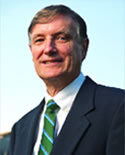
John D. Aber
University of New Hampshire, Durham
Over the course of his career John D. Aber has broken new ground in the biogeochemistry of forest ecosystems. An expert on nitrogen cycling and saturation, ecosystem management, climate change, and the effects of acid rain on forest, John developed a computer simulation that allows scientists to study immensely complex forest ecosystems. Likewise, his pioneering use of high spectral resolution remote sensing to provide data on foliar chemistry over large areas has let researchers monitor forests on a global scale. John's 200 publications include Terrestrial Ecosystems, the standard textbook for his field, and Forests in Time: The Environmental Consequences of 1000 Years of Change in New England.
At the University of New Hampshire, where John attained the distinction of "University Professor," a title held by only four professors at a time, he led UNH in its efforts to become a model for campus greenhouse gas emission reduction. As a researcher-turned-administrator, he established the UNH Sustainability Institute, created the UNH Energy Task Force - the formal working group behind UNH's Climate Change Initiative - and adopted sustainable practices for UNH's daily operations. As part of that, he put in place a landfill gas-to-energy project that provides up to 85 percent of the campus's energy needs. During John's tenure as provost, UNH received a Gold rating from the Association for the Advancement of Sustainability in Higher Education. With his leadership, UNH is seeking to become the second institution of higher education to achieve Platinum status. In 2012, US News & World Report named UNH as one of its Top Ten Eco-Friendly Colleges. Since his tenure as provost, John has returned to research, with a focus on sustainable ecosystem management. One of his projects focuses on nutrient and energy balances of UNH's Organic Dairy Research Farm, with the goal of reducing dependence on external sources of energy. John's commitment to sustainability and protecting the environment in New England and beyond has spanned decades.
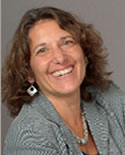
Deborah Markowitz
Vermont Agency of Natural Resources
When Deborah Markowitz presented a credit card at a parking lot in Vermont, the attendant greeted her with a deluge of appreciation for her service as Vermont Secretary of Natural Resources. It's hard to travel in Vermont with Deb without this story replaying. Deb's ability to create wins for the environment, and her commitment to bringing Vermont's environmental influence and good ideas to larger arenas has earned her this recognition. Deb became secretary of the Agency for Natural Resources in 2011, introducing one of the most productive and innovative eras in the agency's history. She focused on challenges from climate change and water quality to forest health and recycling rates. When Deb arrived, the organization was shell-shocked from years of budget cutting and rotating secretaries. Within a year, it had entered a sustained period of innovative environmental policy improvement. Over the next six years, Deb and her commissioners and staff secured protection for shorelines; universal recycling requirements; a Lake Champlain cleanup plan, and greater attention to forest fragmentation.
Deb holds numerous other leadership positions with environmental organizations, which further demonstrates her commitment to the cause. As Vermont secretary, Deb educated constituents and decision-makers through op-eds and speaking engagements and by convening dialogues, creating conditions for policy change. She encouraged staff to help communities better understand natural resources and better protect their ecosystems. She convened a team to develop new training curricula now delivered to town officials statewide. She launched an annual Municipal Day, with workshops for local leaders about state policies, resources and tools they can tap. For decades, Vermont struggled to find resources to maintain state parks. Deb found funding, and brought Vermont leaders together to create Vermont Parks Forever to improve nature centers, increase park access for underserved communities and inspire a generation of environmentalists. Deb brought Vermont's experience, ideas and optimism to Paris and Morocco climate talks. Asked why Vermont should work so hard to reduce carbon pollution when its contribution is so small, Deb sites moral responsibility and highlights the opportunity for a small, innovative state to show other states and even countries that climate solutions are feasible.
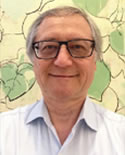
John Bolduc
Cambridge, Massachusetts
During 20 years as Cambridge's environmental planner, John Bolduc has distinguished himself as a thoughtful leader in emerging technology and in his policy responses to climate change impacts. John realized that one of the biggest problems facing U.S. cities, including Cambridge, would be the impacts from climate change. A realistic planner interested in building a community that can withstand the weather predicted by climate scientists, John led Cambridge to become an early adopter of the International Council for Local Environmental Initiatives, which helps local governments reduce carbon pollution. John shepherded Cambridge's first climate protection plan in 2002, which called for reducing nearly 500,000 tons of CO2. With the Cambridge City Council vote to support making Cambridge a Zero-Net Energy city, John became a national leader in zero-net energy planning.
John has his fingers in every aspect of Cambridge's footprint. He oversaw the green renovation of City Hall Annex, which earned a LEED Gold rating by the U.S. Green Building Council, making it the world's first LEED certified historic municipal building. He succeeded in making Cambridge a Massachusetts Green Community, a state program that offers incentives for reducing greenhouse gas emissions and increasing energy efficiency of municipal buildings. And he worked with the City Council to adopt a more stringent set of building efficiency codes than is required by state law. Among the green policies John initiated was an ordinance that requires businesses to report their energy use, thus encouraging them to become more energy efficient. And he was instrumental in the city forming a Climate Protection Action Committee.
John is a leader in the MetroBoston group of 14 Boston-area communities collaborating on vulnerability assessments, and reviewing the vulnerability of critical infrastructure needed by the metro area. John knows climate change is a global concern and local actions will be critical. His deep knowledge of environmental issues, his ongoing research into best practices, his willingness to share his knowledge, his collaborative approach, and his quiet but effective advocacy make John deserving of this award.
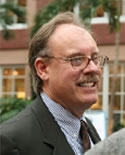
H. Curtis Spalding
Cranston, Rhode Island
Curt Spalding, administrator for the New England office of the U.S. Environmental Protection Agency from December 2009 to January 2017, has demonstrated throughout his career a deep commitment to protecting the environment. As EPA New England's administrator, he worked to bolster coastal resilience, clean New England's lakes and rivers, and improve the region's communities through innovation and science. Among his priorities was bettering stormwater pollution controls. Curt's interest in involving those who have a stake in an environmental issue led to EPA's first real-time water quality reporting tool, which relies on citizen scientists, professional researchers, and a myriad of other groups for data and outreach.
Curt has routinely lead the way in finding innovative, cooperative solutions to difficult problems. Curt joined Sen. Whitehouse and Sen. Reed to establish the Southeastern New England Coastal Watershed Restoration Program. A collaboration of government agencies, researchers and non-governmental organizations, this program works to protect and restore coastal watersheds by addressing excess nutrients and other pollutants. The program has made available over $12 million to improve coastal water quality, restore coastal ecosystems, and address nutrient pollution. Curt has also championed programs to clean the waters of Cape Cod and restore Lake Champlain. His work in Boston Harbor is a national success story, turning one of the most toxic harbors in the country in the 1980s into one of the cleanest urban beaches in the nation.
Before becoming EPA New England's regional administrator, Curt was executive director of Rhode Island's Save the Bay for nearly two decades. There, he oversaw construction of the Save the Bay Center in Providence. This award-winning center transformed a former landfill into a landmark facility that provides classroom spaces for Save the Bay and serves as a living example of the organization's approach to environmentally friendly shoreline development. Under his leadership, Save the Bay grew into a nationally recognized, 20,000-member environmental advocacy and education organization. Curt's passion for his work and his vision for a vibrant, resilient New England shaped the work of our region's environmental and coastal communities for the last three decades.
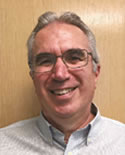
Doug McVay
Rhode Island Dept. of Environmental Management
During nearly 40 years at the Rhode Island Department of Environmental Management, Doug McVay played a major role in developing and putting in place virtually every major air quality program in the state, leaving residents breathing cleaner air as a result of his efforts. Doug, who retired in March, started as an air quality engineer in 1977 and moved up the ranks to his most recent position as chief of the Office of Air Resources. There, he served as acting chief for nearly four years before becoming chief in 2012. In 1996, Doug was honored with DEM's Distinguished Service Award, which recognized that he maintained the highest level of commitment, leadership, and humble service throughout his career.
Doug was instrumental in leading the air pollution control programs, had a direct role in development and passage of many of the state's air quality and climate change statutes, and was the department's lead expert in implementing the federal Clean Air Act, as well as in the review of virtually all air pollution control permit applications that came before the department. He has also been the department's lead technical person for air pollution issues, supporting its involvement in the Environmental Council of States and the New England Governor's Conference Committee on the Environment. Doug was involved in developing most of DEM's 50 regulations. He had responsibility for developing the Title V air permitting program for Rhode Island. In addition, Doug has served and continues to serve on many regional and national committees. He has represented Rhode Island as a board member of the Northeast States for Coordinated Air Use Management, the Ozone Transport Commission and the Regional Greenhouse Gas Initiative. An expert, leader, and colleague at DEM, Doug was highly valued for his expertise and commentary, both on air pollution issues and all things related to his beloved New England Patriots.
Individual
Jon Schaefer
Berkshire East Mountain Resort
Charlemont, Massachusetts
Alpine ski areas usually leave large carbon footprints, especially when their energy is derived from fossil fuels. By investing in renewable energy sources, Berkshire East not only reduced its carbon footprint but also expanded its summer operations, created new jobs and continued to provide recreational opportunities to thousands of children and families. Jon Schaefer has led Berkshire East Mountain Resort to become the only ski area in the world to power 100 percent of operations with onsite renewable energy. Jon directed projects that lead to the installation of a 900 kilowatt wind turbine, which came on line in 2011. The next year, Jon installed 90 solar trackers that produce 700,00 kilowatt hours a year. These two systems insured the future for Berkshire East and have allowed the resort to add zip line tours, a bike park and a mountain coaster. Jon also initiated several energy saving projects that cost nearly $3 million dollars, including installing 500 LED lights, snowmaking and pumping upgrades, and a water optimization program. He installed a wood-burning system that uses wood from the resort and built a sawmill to produce finished lumber. Jon plans to take the resort completely off the grid. Excess heat produced by an energy storage system will be captured to heat resort buildings. The resort's Renewable Energy Classroom gives tours, presentations and workshops, welcoming students, organizations and representatives from other ski areas. While many family ski areas have closed, Jon and his family at Berkshire East became industry leaders.
Anthony (Tony) Ferri
Rust-Oleum Corporation
Attleboro, Massachusetts
The Ten Mile River running through downtown Attleboro has long been an energy and operations resource for manufacturing. Wildlife habitat and water quality improvements continue to be priorities. When Tony Ferri began in 2009 as environmental health and safety manager for Rust-Oleum, he took note of one of Rust-Oleum's core values - community stewardship. Later, working with Attleboro's fire department to make sure firefighters were trained and familiar with his complex facility, he learned that not all businesses had the background for robust chemical management. With support from management, Tony began to educate other local businesses about community and emergency responder health and safety as well as about other regulatory and environmental measures related to chemicals. At Rust-Oleum, Tony led projects to use chemicals under tighter controls. As processes became more efficient and new equipment replaced old, less space was needed for production and storage. Tony's efforts raised awareness of regulatory obligations, which resulted in improved chemical stewardship by the businesses. At Rust-Oleum, upgrades reduced emissions, minimized the potential for chemical release, and increased worker safety. Rust-Oleum's investments prevent pollution, reduce water use and improve groundwater recharge. Tony leveraged the results of rehabilitation to return riverfront space to vegetation and restore the riverfront. Tony proved businesses can share knowledge for overall improvement in shared environments and that environmental restoration succeeds as a companion piece to revitalization projects. Also, as businesses became better equipped to manage chemicals, demands placed on the fire department eased.
Government
New Hampshire Dept. of Environmental Services
Drinking Water & Groundwater Bureau
Cindy Klevens, Kelsey Vaughn, Christine Bowman, Pierce Rigrod, Paul Susca
About half of New Hampshire homes use private wells for water. A significant percentage of those wells produce water with unsafe levels of naturally occurring contaminants. This award recognizes a program of New Hampshire Department of Environmental Services that allows well owners to test their water and get treatment options. Well owners, responsible for testing and treating private well water, may be confused by technical water treatment systems. They may also get conflicting recommendations, leaving them unable to address contaminants. In 2013, the Drinking Water and Groundwater Bureau at DES was awarded $290,000 from the US Centers for Disease Control and Prevention to evaluate treatment options for multiple contaminants, at varying concentrations, entered by the user from a water test laboratory report. A resulting report interprets test results, summarizes health risks, and provides recommended water treatment options. The guidance, known as Be Well Informed, or BWI, has educated homeowners about their well water and treatment methods. A test of nearly 3,000 private wells found more than half exceeded standards for arsenic and for radon. About 21 percent indicated stagnant lead levels above the drinking water action level. BWI's water treatment recommendations are based on a series of unique logic models that evaluate hundreds of different combinations of contaminants at varying concentrations with water treatment recommendations adjusted accordingly. This tool highlights the importance of testing private wells.
Soak Up the Rain NH
Barbara McMillan, Lisa Loosigian, Rob Livingston, Jillian McCarthy, Steve Landry, Eric Williams
The Soak Up the Rain Team of the New Hampshire Department of Environmental Services created and put in place Soak Up the Rain NH, an innovative program unique among New England states to encourage practices to reduce runoff. More than 90 percent of water pollution in New Hampshire are caused by pollutants carried in stormwater runoff. The SOAK team works with citizens and local partners to encourage practices that restore NH waters. The team works with homeowners and students, local officials and planning commissions, and landscaper training programs, to name a few. SOAK NH has participated in watershed-based professional events, Discover Wild NH Day, the 4th Grade Drinking Water Festival and Science Fair, and joined EPA at the 2016 Boston Flower and Garden Show. The SOAK Facebook page and website inform homeowners how to reduce runoff, including the NH Homeowner's Guide to Stormwater Management: Do-it-Yourself Stormwater Solutions. Local SOAK NH groups can get outreach and training materials. Since the program began in 2012, it has worked with about 15 partner groups on 26 installations that include rain gardens, water bars, infiltration trenches, rain barrels, a dry well and a buffer. The group projects are soaking up and estimated 569,214 gallons of runoff; 12,257 pounds of sediment; 6 pounds of phosphorus; and 16 pounds of nitrogen.
Shelton, Connecticut
Mayor Mark A. Lauretti and James E. Ryan
Mayor Mark Lauretti and James Ryan had the vision and leadership to clean and revitalize Shelton's former mill district. A 1975 fire that destroyed 10 acres of industrial buildings and displaced 2,400 workers left a legacy of hazardous materials and petroleum contamination in the Shelton Canal & Industrial District. Upon becoming mayor, Mark worked with James Ryan, director of the Shelton Economic Development Corporation, to advance a vision that included a mix of housing, commercial, retail, and open space along the river. They built a team with varied expertise to address complicated brownfields issues and to seek funding. Since 2000, the city and development corporation have been awarded seven EPA assessment grants for more than $600,000, which led to $1.4 million for seven cleanups, five of which are now finished. EPA's total brownfields investment in Shelton exceeded $2 million and helped leverage $1.1 million in federal funds, $10.6 million in state funds and $80 million from private developers. Mayor Lauretti and James Ryan confronted the challenges of brownfields sites and worked with stakeholders to unlock their redevelopment potential. Most importantly, they created a culture of accomplishment and success in Shelton.
Connecticut Department of Energy and Environmental Protection
Ronald Curran and Patrick Bowe
Ronald Curran and Patrick Bowe of the Connecticut Department of Energy and Environmental Protection have made extraordinary efforts in the cleanup of the Raymark Industries Superfund Site in Stratford, a brake manufacturer that used its toxic waste as fill and offered this fill to employees, residents, and the town. As a result, waste was left at locations around town and emergency cleanups were done at more than 40 residential properties and a school. Groundwater in the area was also contaminated and vapor mitigation systems were installed at over 100 homes. For two decades, Ronald and Patrick advocated for a cleanup that would protect human health and the environment. They participated in exhaustive discussions and contentious meetings. As work ramped up at this large and complex site, they both looked for constructive ways to put in place a controversial, and expensive cleanup, slowly building consensus. Ron's deep knowledge of Raymark activities and face to face discussions with residents and business owners, and Pat's connection to the town where he grew up helped build trust, resulting in a $95 million cleanup plan that will protect the community, remove the Superfund stigma, cost significantly less than other cleanup options, and provide redevelopment opportunities. Due to their committed desire to protect the health of residents and business owners, Ron Curran and Pat Bowe made substantial and significant contributions to the Town of Stratford.
Maine Department of Environmental Protection
Thomas F. Downs
Thomas F. Downs, chief meteorologist with the Maine Department of Environmental Protection, has put in place significant local, regional, and national ambient air quality programs. Tom invests much time and effort to analyzing air monitoring data gathered in Maine and throughout the eastern United States. Many states, regional organizations and EPA depend on his work to demonstrate the success of various transported pollution control programs that impact ozone levels and regional haze, and to appropriately plan for the future of these programs. The results of past efforts to use lower-sulfur fuels, improve efficiencies in mobile sources, operate cleaner-burning heating appliances and improve the natural gas infrastructure show that these strategies are working. Tom’s work provides a consistent approach to data analysis, making the results easier to compare and understand, which is crucial given problems that could arise if analyses were performed differently by different organizations. Tom’s analyses let environmental leaders make data-driven decisions on ambient air quality issues. His analytical and technical background has helped him anticipate the progression of regional and national air quality improvement efforts. Tom often foresees the need and advantage of analyzing data in a different manner, which helps guide decisions by environmental leaders before they recognize the question. Tom is widely respected by his colleagues as highly intelligent with a tremendous knowledge base pertaining to a myriad of complex air-quality issues. His dedication to the improvement of the environment and his 25 years of service have earned Tom this recognition.
Chicopee, Massachusetts
Chicopee Public Schools - Food Service
The agricultural sector is the second highest source of greenhouse gas emissions in the U.S. Flooding and droughts challenge the resiliency of our food system. Forecasts project U.S. obesity rates exceeding 50 percent of the country by 2030. ChicopeeFRESH, an initiative of the Chicopee Public Schools Food Service department, has set an ambitious goal to increase the amount of fresh, local, and sustainably produced food served in the schools. By 2018, the organization expects to source 20 percent local totaling about $350,000. It has developed local, healthy menu items, many prepared from scratch, to protect the environment and the health of Chicopee students. Through the ChicopeeFRESH program, so far Chicopee schools has increased the amount of local/sustainable foods it buys from $10,000 in 2014 to $160,000 last year and expects to increase to $250,000 in the next year. The school lunch program was revitalized with local, seasonal items nearly every day of the year. Buying local keeps money in community, preserves farms, reduces transportation costs, protects landscapes, and ensures fresh, healthy food stays available and affordable. In 2016 Chicopee Public Schools was awarded a grant to establish a program aimed at teaching peer school districts to reach their local food sourcing goals. In its first year, Chicopee Schools consulted with schools in Greenfield, Ludlow and Amherst, Massachusetts, as well as Hartford, Connecticut.
Business
Hypertherm, Inc.
Hanover, New Hampshire
As an employee-owned manufacturer, Hypertherm has a triple-bottom line mission with a core value of environmental stewardship. Since 2010, the company has worked toward challenging environmental goals for 2020 that guide products, logistics, and operations. It aims to send zero waste to the landfill and reduce all waste streams, and has found ways to recycle or reuse materials that were once landfilled. In 2016 the company created a regional waste cooperative, working with its waste hauler. Hypertherm and other businesses combine waste to get the quantities needed for recycling markets. It has also reduced the amount of waste it receives from suppliers through returnable packaging. Overall, Hypertherm reduced waste to landfill from 42 percent in 2010 to 2.2 percent in 2016. To reach its goal to reduce energy use by 30 percent, the company pursued projects ranging from compressed air waste to installation of LED lighting and building management. Machine warm-up times have been reduced and lighting schedules optimized. A goal for 50 percent reduction in the carbon impact of its operations was reached in 2012 after it bought renewable energy credits for all its power and began a program rewarding associates for walking, biking, carpooling, or taking mass transit to work. To reduce the environmental impact of its products, the company measures new products through life cycle assessments and a "Design for Sustainability Scorecard." A product released in 2016 was 11 percent more energy efficient and had a 13 percent lower carbon footprint than its predecessor.
Ken's Foods
Marlborough, Massachusetts
Ken's Foods joined EPA's SmartWay Transport Partnership to reduce emissions from shipping. Air pollution emissions as grown as freight activity in the U.S. has increased by over 50 percent since 1990, despite increased fuel efficiency. Ken's is one of only 250 shippers nationwide who motivate thousands of carriers to save fuel by choosing SmartWay-registered trucking companies to carry its product. Ken's Foods, a SmartWay partner since 2011, in that time has increased the amount of goods shipped via SmartWay carriers by 10 percent, covering almost all of its outbound finished goods. The company has persuaded its carriers to join SmartWay, if they hadn't already, and when looking for new carriers, it has sought providers already in the program. Ken's Foods has also undertaken other green initiatives. The company has its own on-site wastewater treatment facility which in 2008 was redesigned and commissioned as the world's largest anaerobic membrane bio-filter. This alone increased treatment capacity by 25 percent. A new co-generation system commissioned in December, when fully optimized, is expected to generate about 7 million KWH of electricity and use about 17,280 million BTUs of heat recovery for steam and hot water. This system utilizes both natural gas and methane, a byproduct of wastewater treatment. The company predicts it will use a blend of 70 percent bio-gas to 30 percent natural gas once the system is fully optimized. They estimate this will reduce their greenhouse gas emissions by about 342 tons per year.
Ocean Spray Cranberries
Middleborough, Massachusetts
Ocean Spray, which has its largest plant in Middleborough, has focused on smart logistics by locating its plants close to where farmers grow fruit, meaning fewer miles driven to move ingredients and distribute product. To reduce freight emissions, Ocean Spray joined EPA's voluntary SmartWay Transport Partnership in 2008. Ocean Spray is one of only 250 shippers nationwide, and 21 based in New England, to choose SmartWay carriers that save fuel and optimize their supply chains to make them more efficient. As of 2016, 91.98 percent of all freight moved by Ocean Spray nationally was by SmartWay partners with the remaining 8 percent of goods moved by small, local carriers that support the local economies. By using Smartway carriers, Ocean Spray has reduced carbon dioxide emission in the last 5 years by over 65 percent. In addition to green fleets, Ocean Spray has also focused on innovative packaging to reduce excess material and to move more products per pallet and fewer pallets per truck, thus reducing the number of shipments needed. The redesign last year of a 25-pound box of dried cranberries yielded additional environmental benefits of 22 percent forest fiber savings and reduced plastic packaging by 34 percent. Finally, Ocean Spray has taken a creative approach to further reduce transit emissions through its waste stream. The Middleborough plant has a waste diversion rate of 97.4 percent. Nearly 96 of its waste is re-purposed into new end uses or composted.
The TJX Companies, Inc.
Marlborough, Massachusetts
TJX has long been committed to pursuing initiatives that are smart for business and good for the environment. This growing, international business increased its global store count by over 215 stores in 2015 and understood that its growth could increase its environmental footprint and greenhouse gas emissions. It has committed to focusing on meaningful initiatives that help reduce its environmental impacts and demonstrate its commitment to sustainability. Among the initiatives, it will focus on reducing the use of electricity and natural gas; reducing the amount of fuel use in operations and evaluating best practices for new construction, building operations and maintenance; reducing the amount of waste generated; disclosing environmental data. Its goal is to reduce greenhouse gas emission by 30 percent by 2020, against a 2010 baseline. So far it is on track. Two areas of particular focus have been transportation logistics and new construction and building operations. Through modeling software that improves the efficiency of its delivery network, working to better use trailer space or testing new alternative fuel vehicles, the company is striving to improve the movement of merchandise. TJX has been a member of EPA's SmartWay Transport Partnership since 2007. As a SmartWay shipper, the company is committed to using SmartWay-certified transport carriers. In 2015, about 98 percent of TJX's U.S. land transportation mileage was with SmartWay-certified carriers. To achieve this, TJX encouraged carriers to participate in SmartWay. Even with an increase in miles shipped in the last five years, the company has reduced CO2 emissions. Since 2013, TJX has worked with one of its transport carriers to operate compressed natural gas trucks in two major metropolitan markets. It has increased the number of trucks used in each of the past three years. They estimate these trucks produce about 22 percent less CO2 emissions per mile than diesel trucks.
Energize CT House of Worship Team
Bridgeport, Connecticut
Sheri Borelli, Pat McDonnell, Amy Thompson, Samantha Sojka
This pilot program in Bridgeport has worked with houses of worship to successfully reduce energy use and costs, freeing up money for other missions of religious organizations. The Energize CT House of Worship Team used EPA's software program to score churches and temples, then compare these scores to similar buildings nationwide. Program administrators form the local power company, United Illuminating, met with representatives from the religious organizations and spelled out rebates and incentives that could improve energy efficiency. After buildings were benchmarked, projects were identified that saved 1 million kWh and involved over $1 million in zero percent interest loans. One church used the money saved to give out an extra 1,000 turkeys at Thanksgiving, and another feeds 140 people at their Friday night community meal instead of 40. This project promoted the benefits of energy efficiency to the faith community. Partly as a result of this team and its efforts, every EPA regional office has some involvement in promoting energy efficiency to the faith community. EPA’s Region 5 is benchmarking 2,500 Catholic churches; Region 4 is working with 10 churches in a pilot project. A house of worship workgroup meets every quarter in conference calls. The next phase of the program, kicked off in November, involves Eversource power company and targets 30 houses of worship in New Haven and 30 in Hartford.
Hickory Hills Landowners Inc.
Lunenburg, Massachusetts
Fanwort, an invasive weed species, has threatened the diversity of plants and animals in the 319-acre Hickory Hills Lake in Lunenburg. Highly aggressive, fanwort can displace native species, reduce biodiversity, hamper recreation, reduce property value and hurt water quality. Since discovered in 2011, multiple strategies have been tried to control fanwort, all without chemicals and by volunteers, including quarantines on infested areas, diver-assisted suction harvesting, placing barriers, and pulling by hand. Fanwort can be maintained but not eradicated, so it requires constant monitoring and removal. After barriers did not work, volunteers converted a 21-foot pontoon boat into a dive-assisted suction harvester. They created a diver certification program and trained volunteer deck hands. Three teams of two divers and four deck hands are scheduled up to 22 hours per week to remove fanwort. If fanwort is found, the location is marked and teams are notified. Once plants are harvested, the location is re-marked so removal can be verified. This check and balance system has allowed volunteers to remove or mitigate more than 90 percent of reported locations. In 2016, volunteers gave nearly 1,000 hours for surveying, suction harvesting, and applying barriers. The Hickory Hills Lake Management Plan, written by volunteers, is considered among the best and most comprehensive in the state. Lake groups from other states also fighting fanwort have consulted with Hickory Hills Lake on techniques and visited the lake to see the suction harvester and survey techniques in action.
Raytheon
Tewksbury, Massachusetts
David R. Chamberlain
David Chamberlain at Raytheon has worked within the ENERGY STAR program to help his company take a comprehensive approach to energy efficiency. David started working with EPA in 2015 to create the Best Practices Network, where companies learned from one another about making their facilities as efficient as possible. In 2016, the network succeeded largely due to David's tireless support and outreach to representatives of other companies. He also mentored a small number of companies that wanted help to get their own energy efficiency programs off the ground. The companies in the Best Practices Network focus on decreasing energy use and developing energy management systems that will drive continued reductions. David sets a great example for other companies, and his willingness to mentor others at no personal gain to himself or his company show his commitment to the environment. The Best Practices Network could be easily replicated, as the first step is finding companies with common areas of interest related to energy efficiency. The Network holds on-site meetings at plants that include a tour of the facility, which increases the learning impact on attendees, who in turn do their own efficiency work and keep the Network growing. David has presented information on the Network to ENERGY STAR coordinators from around the country at the annual ENERGY STAR meeting in Washington D.C.
GrandyOats
Hiram, Maine
Nat Peirce and Aaron Anker
Nat Peirce and Aaron Anker of GrandyOats in Hiram, Maine, have shown a commitment to protecting the environment and to the sustainable production of healthy food. An organic granola and food producer, GrandyOats, founded in 1979, spent 14 years in the neighboring town of Brownfield before deciding to move into a larger space. Constructed in 1979, Hiram Elementary School was abandoned in 2008 due to Maine's school consolidation. The presence of asbestos-containing building materials and concerns about former underground fuel tanks complicated GrandyOats' plans to repurpose the property. Nat and Aaron worked with the Southern Maine Planning and Development Commission, who invested about $25,000 of EPA Brownfields assessment grant funding in 2014 for site assessment. Fortunately, the cleanup costs ended up being manageable, and GrandyOats was able to move forward with their plans. They bought the property and cleaned up and renovated the abandoned school. Nat and Aaron didn't stop there. GrandyOats specializes in making healthful food, and they wanted to make their energy as healthy as their granola. GrandyOats is on track to be the first net-zero food facility in New England. With support from the US Department of Agriculture's Rural Development program, Nat and Aaron built a new warehouse for storing raw and organic materials and installed 288 solar panels next to the bakery. The solar panels will generate enough clean, renewable energy to produce millions of pounds of granola and offset over 145,000 pounds of greenhouse gases each year—or the amount of miles equivalent to driving from Hiram, Maine to San Francisco, California and back 25 times.
Environmental, Community, Academia & Nonprofit
National Wildlife Federation
Montpelier, Vermont
The Great Marsh, on the North Shore of Massachusetts, is the largest barrier island and saltmarsh complex in New England. Labelled an Area of Critical Environmental Concern by the state and an Important Bird Area of Global Significance by the National Audubon Society, it is home to numerous state and federally listed species. Development, storm water runoff, storms, sea level rise and erosion threaten this coastal ecosystem. With funding from the Hurricane Sandy Resiliency Grants Program, the Vermont-based National Wildlife Federation led a coalition of more than 50 state, federal, and private entities, including MassBays National Estuary Program, in a $2.9 million project to reduce the vulnerability of communities within the Great Marsh. A project called "Community Risk Reduction through Comprehensive Coastal Resiliency Enhancement for the Upper North Shore, Massachusetts" takes a holistic approach that includes near-term restoration activities and long-term modeling and planning. Over the past two years, invasive pepperweed and common reed have been eradicated from 400 acres of saltmarsh. About 3,000 feet of dunes were established in front of vulnerable coastal infrastructure. Dune restoration efforts engaged more than 350 youth, 28 educators, and hundreds of residents in 25 community trainings and planting events. A planning team identified 100 adaptation strategies that are integrated into a comprehensive Great Marsh Coastal Adaptation Plan. Some 1,200 barriers, including dams, water crossings and culverts, were identified for retro fits and upgrades. This project navigated the complex interconnections between natural resource conservation and economic and political priorities, jurisdictional authority, and diverse management values.
Harvard Food Law and Policy Clinic
Jamaica Plain, Massachusetts
The Harvard Law School Food Law and Policy Clinic (FLPC) is the first clinic of its kind in the nation, focused on addressing the health, environmental, and economic consequences of the laws and policies that govern our food system. Directed by Emily Broad Leib, FLPC strives to increase access to healthy foods, support small-scale and sustainable farmers in breaking into new commercial markets, and reduce waste of healthy, wholesome food, while educating students about ways to use law and policy to impact the food system. FLPC focuses much of its work on food waste reduction, and is at the forefront of the effort to achieve the national goal of halving food loss and waste by 2030.
Food waste, the largest waste stream disposed in the country, makes up 70 billion pounds or 21 percent of our municipal solid waste stream. Meanwhile more than one in 10 households were uncertain of having enough food. Food production accounts for 50 percent of land use, 80 percent of freshwater consumption, and 10 percent of energy use in the country. The Harvard clinic in 2016 hosted conferences, and issued policy recommendations, toolkits and a documentary on food waste. The clinic also walks the talk, donating surplus food to Food for Free, putting into practice one of its policy recommendations. The Harvard clinic's recommendations, toolkits and policy analyses have been widely replicated. For example, its fact sheets supporting food donation in Massachusetts have been replicated in Vermont, Rhode Island and Connecticut, as well as outside New England. In 2016, Time Magazine named Leib, one of the 5 Most Innovative Women in Food and Drink in recognition of the clinic's work to reduce food waste.
Outfall Monitoring Science Advisory Panel
Massachusetts
Andrew Solow, Judith Pederson, Scott Nixon (posthumous), Robert Kenney, Michael Shiaris, Juanita Urban-Rich, Jim Shine, Robert Beardsley, Geoffrey Trussell
The Outfall Monitoring Science Advisory Panel was critical to the success of the Boston Harbor cleanup and recovery. Over the last 18 years, this panel has held the MWRA's feet to the fire to ensure permit requirements were met and that the recovery of Boston Harbor was not accomplished at the expense of Massachusetts Bay. This independent group of academic scientists advises EPA and the state Department of Environmental Protection on the effects of the discharge of about 320 million gallons per day from MWRA's Deer Island sewage treatment plant, which is sent nine miles offshore into Massachusetts Bay. The panel was formed in 1998 as the NPDES permit was being drafted. This permit incorporates tools to monitor the effects of the discharge and notify the public when levels of certain indicators exceed thresholds judged by the panel to be of significance. The panel's most important work is evaluating monitoring program revisions. The MWRA Outfall Monitoring Program was one of the first such ambient monitoring programs established as a NPDES permit condition, and has been used as a model for monitoring wastewater discharges in other coastal ecosystems. For almost 20 years, this independent group of highly regarded marine scientists has helped ensure the outfall discharge does not cause adverse effects, and has provided accountability and credibility to the public.
Youth Environmental & Social Society Club (Y.E.S.S.)
Massachusetts
Marine debris, trash that pollutes waterways and oceans, may sit on the seafloor, get caught on rocks or coral reefs, or float on the surface. Some marine debris remains in the marine environment for years, which is of concern because of its persistence and effect on the environment, wildlife, and human health. The Youth Environmental & Social Society, an afterschool club at Bridgewater-Raynham Regional and Middleborough high schools, focuses on community activities related to sustainability and fair trade, along with other social concerns. In 2016, Y.E.S.S. partnered with Bridgewater State University on community projects that taught students and others about marine debris and wildlife. In April, Y.E.S.S. students from the schools partnered with the New England Coastal Wildlife Alliance for an educational activity at the Herring Run Festival in Middleborough where participants examined marine debris and determined how long each item would take to degrade. Y.E.S.S. students cleaned Plymouth Beach in May, collecting marine debris that washed up on the beach. They picked up more than 150 cigarette butts and about 30 plastic bags. Students performed several other marine debris and land pollution reduction efforts. They collaborated with local high schools, universities, and nonprofits and made a video of their activities to share their projects with other schools and communities. The students shared the video through Bridgewater television, at schools and with Science, Technology, Engineering, and Math campers to encourage other students to participate in Y.E.S.S., support environmental sustainability and obtain a degree in sciences.
Centro de Apoyo Familiar
Lawrence, Massachusetts
Damaris Batista and Walkiria Pool
Centro de Apoyo Familiar was founded in Lawrence in 2006 by Damaris Batista and Walkiria Pool to "revitalize communities through economic, social and educational empowerment in collaboration with faith-based organizations.” Their simple approach continues to get sustainable results through effective communication to raise the awareness of communities hurt by environmental, social and health issues. The train-the-trainer model that Centro uses is known in Spanish known as the "promotora model." Individuals are trained as community workers and build local capacity by training disadvantaged residents. The center's model can be easily replicated, particularly among immigrant populations who rely on religious belief and the church for support. It is through this connection that the organization has successfully addressed the needs of a largely Hispanic community. Resident church leaders are trained as promotoras and work to promote the health, safety and wellbeing of residents who face poverty, high lead levels, high rates of pediatric asthma and obesity and an unfair share of environmental burdens. Using this model, Centro has made incredible in-roads over the past year, training over 1,000 families and 3,000 individuals in asthma management at daycare centers and homes. They trained over 200 individuals in recycling; 1,038 individuals in healthy eating and better lifestyle choices; mentored over 100 youth to reduce dropout rates. In 2016, CAF was recognized by the White House. This model has also allowed EPA enviable access to under-served communities that otherwise may not be possible.
Weather Ready Mattapoisett
Mattapoisett, Massachusetts
In 2015, Mattapoisett began looking at their drinking water and wastewater infrastructure to see how vulnerable the town would be to future storms and flooding. At the request of town officials, a group of community members studied their past to better prepare for their future. Their resulting projects are models for other communities and the director of a global policy program at MIT plans to include this effort in a book about forging tools to prepare for the future amid changes. Weather Ready Mattapoisett, as the project was named, collected stories and pictures from the past and digitized them to share with the local cable television station. About a dozen residents provided more than 120 items. The cable station recorded residents interviewing Mattapoisett survivors from the 1938 and 1991 hurricanes, and edited these into short stories that were shared on a website. Local officials working with Old Rochester Cable TV created a video telling citizens how to: get information about extreme weather, create a communication plan, and prepare homes to reduce the risk of hazardous materials and sewer backups. This video airs before major weather events. A Boy Scout marked past flood levels for an Eagle Scout project. And the group collected pictures from the 1938 flood and used google maps to compare them to current views of the same places. This project represents the best of a community working together for environmental protection.
Children's Environmental Health
Roberta Hazen Aaronson
Childhood Lead Action Project
Roberta Hazen Aaronson has been a visionary leader in Rhode Island's childhood lead poisoning movement, with a track record spanning more than 25 years as executive director of the Childhood Lead Action Project and involvement in most of the important statewide lead poisoning efforts. The Project has worked to eliminate childhood lead poisoning through education, parent support, and advocacy. It is known as a leading resource for lead education and information locally and nationally. Roberta, who retired this winter, started her quest as a parent at a time when one in three children in Providence was poisoned by lead, then continued as an advocate for the community. Roberta's vision inspired many to take a creative, highly effective approach, tailoring outreach to the needs and culture of each community. She has valued having bilingual staff to get out the word. She trained case managers so they could help families identify lead hazards, access lead poisoning prevention resources, and assert legal rights to lead-safe housing.
Roberta's advocacy through the Project sparked the State to pursue its successful landmark lawsuit against lead paint manufacturers. Her work also helped pass the Lead Hazard Mitigation Act of 2002, which has resulted in lead prevention training for thousands of landlords and opened up avenues of justice for families of lead poisoned children. The project taught realtors and property owners how to control lead hazards in rental units, and tenants how to avoid lead poisoning. Some 24,000 parents, immigrants and refugees, tenants, health workers, homeowners, and professionals in high-risk communities learned about lead dangers and resources and 8,000 people were trained on lead prevention and mitigation. In addition to education and outreach efforts, Roberta helped build strong, sustainable networks, such as the Get the Lead Out Coalition, which advocates for state and local policies protecting children from lead exposure. Thanks in no small part to Roberta's pioneering work, lead poisoning in the state is significantly reduced. There is little doubt the work Roberta started will continue until childhood lead poisoning is eliminated.
Special Thanks
Vocalist
Danny Rodriguez
Danny Rodriguez has worked at the Environmental Protection Agency for sixteen years. Working at the EPA, while in high school and college, afforded Danny the value of understanding the important work of this Agency in protecting the environment. His efforts in protecting the environment began at the age of fifteen where he worked with a team of environmentally-focused youths in presenting ideas to community leaders for vacant lots, including brownfields sites, in this environmental justice community. Since, Danny has continued to work on efforts in protecting our environment. During his early teenage years, Danny began to sing in his family's place of worship and has, ever since, continued to learn the value of singing and music.

Accompaniment
Ray Cavicchio and his amazing invention, the Cavichord
Ray's musical career started in Hollywood at age 16 as a marimba artist on the Lawrence Welk Show. Although the producers wanted Ray and his brother, Rob, to stay on with the Welk show, the offer was politely declined due to their college aspirations. Ray has a Ph.D. from Tufts in Psychology-Medical Engineering, and is a patent holder. He is a photographer, computer-graphic artist, and an instrument-rated private pilot.
Ray had classical piano lessons from age 8 to 12, followed by some marimba lessons from his dad, Salvy, a virtuoso featured on several popular radio and TV shows in the 1940s and 1950s. Salvy's brother, Dan, gave Ray an accordion when Ray was in college. Ray soon rigged the accordion with an electronic bass device using circuitry copied from an organ pedal-board. Unfortunately, a few years later this unique accordion was stolen along with the special bass device. However upsetting it seemed at the time, technology had evolved, and Ray patented an innovative circuit, incorporating several improvements, thus paving the way for his ultimate keyboard instrument, the Cavichord.
Cavichord
A standard accordion has bass and chord buttons on the left side, and a piano-style keyboard on the right. The Cavichord makes good use of this intrinsic triple-section design while adding a fourth section of melody derived from the highest note played with the right hand. Each of these four sections can play a unique combination of sounds simultaneously depending on how the Cavichord is squeezed. With practice it can sound and feel as though there were a symphony orchestra under one's fingertips with each section responding independently yet harmoniously. Therefore, all of the music is fundamentally live at all times.
You will hear the exhilarating sound of a harp glissando. No other keyboard in the world has this feature. These arpeggios were recorded live as Ray played them. He invented special circuitry that allows reproduction of these arpeggios at will using the chord buttons of the Cavichord.

Rivanna Natural Designs, Inc.
Green awards for your next green event
At Rivanna Natural Designs, we believe products that express gratitude, reward performance, and celebrate excellence should harm neither the planet nor the people who create, purchase, or receive them. We are honored to create these awards for the EPA's New England Region. The glass for the awards comes from a 100-year-old family-owned artisan glass company in West Virginia that transforms crushed bottle glass. The ebony glass awards are smooth, rich, and sandblast flawlessly. It's difficult to believe they are made from glass dust that would otherwise be considered hazardous waste.
The central principal of our business is that, in its every aspect, our work must reflect our strong obligation to our clients, coworkers, community, and environment. A certified woman-owned business and B Corporation, we participate in a number of voluntary programs aimed at minimizing our environmental footprint, including EPA's Green Power Partnership and EnergySTAR™ for Small Business.
